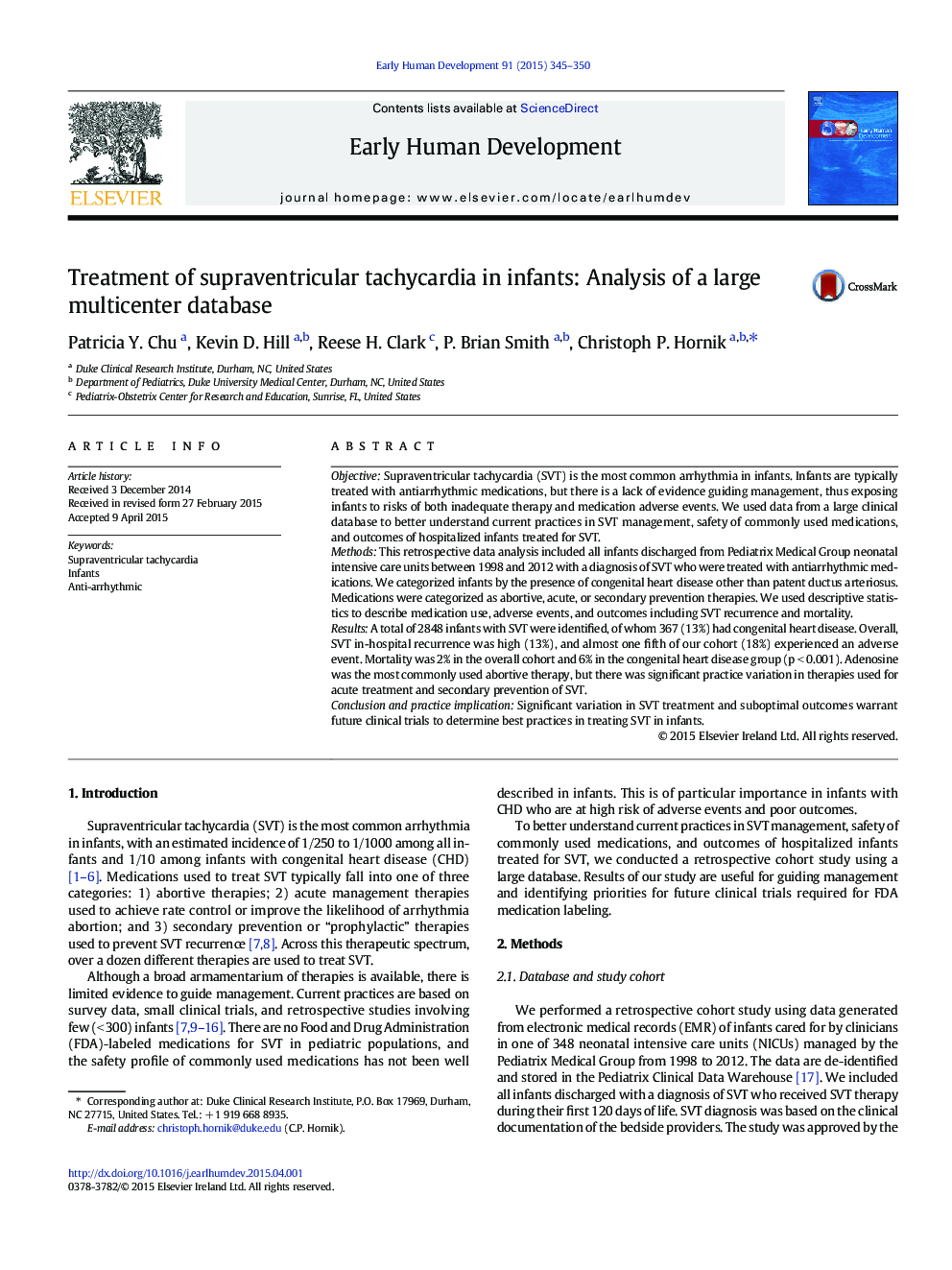| Article ID | Journal | Published Year | Pages | File Type |
|---|---|---|---|---|
| 3916427 | Early Human Development | 2015 | 6 Pages |
•In-hospital recurrence of supraventricular tachycardia in infants is common.•Antiarrhythmic therapy practices vary widely, especially for drugs used as secondary prevention.•Adverse events are common in infants exposed to antiarrhythmic drugs.
ObjectiveSupraventricular tachycardia (SVT) is the most common arrhythmia in infants. Infants are typically treated with antiarrhythmic medications, but there is a lack of evidence guiding management, thus exposing infants to risks of both inadequate therapy and medication adverse events. We used data from a large clinical database to better understand current practices in SVT management, safety of commonly used medications, and outcomes of hospitalized infants treated for SVT.MethodsThis retrospective data analysis included all infants discharged from Pediatrix Medical Group neonatal intensive care units between 1998 and 2012 with a diagnosis of SVT who were treated with antiarrhythmic medications. We categorized infants by the presence of congenital heart disease other than patent ductus arteriosus. Medications were categorized as abortive, acute, or secondary prevention therapies. We used descriptive statistics to describe medication use, adverse events, and outcomes including SVT recurrence and mortality.ResultsA total of 2848 infants with SVT were identified, of whom 367 (13%) had congenital heart disease. Overall, SVT in-hospital recurrence was high (13%), and almost one fifth of our cohort (18%) experienced an adverse event. Mortality was 2% in the overall cohort and 6% in the congenital heart disease group (p < 0.001). Adenosine was the most commonly used abortive therapy, but there was significant practice variation in therapies used for acute treatment and secondary prevention of SVT.Conclusion and practice implicationSignificant variation in SVT treatment and suboptimal outcomes warrant future clinical trials to determine best practices in treating SVT in infants.
